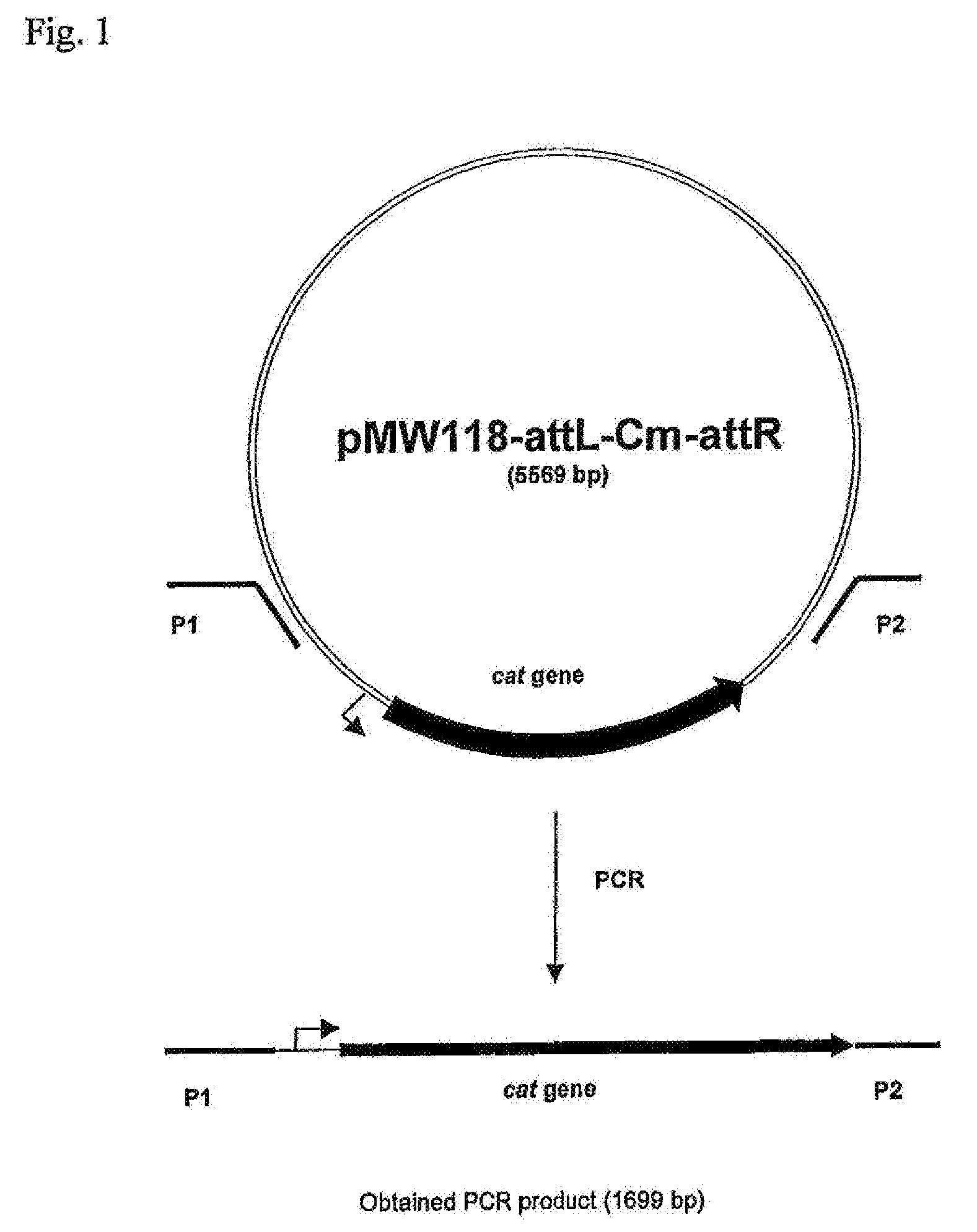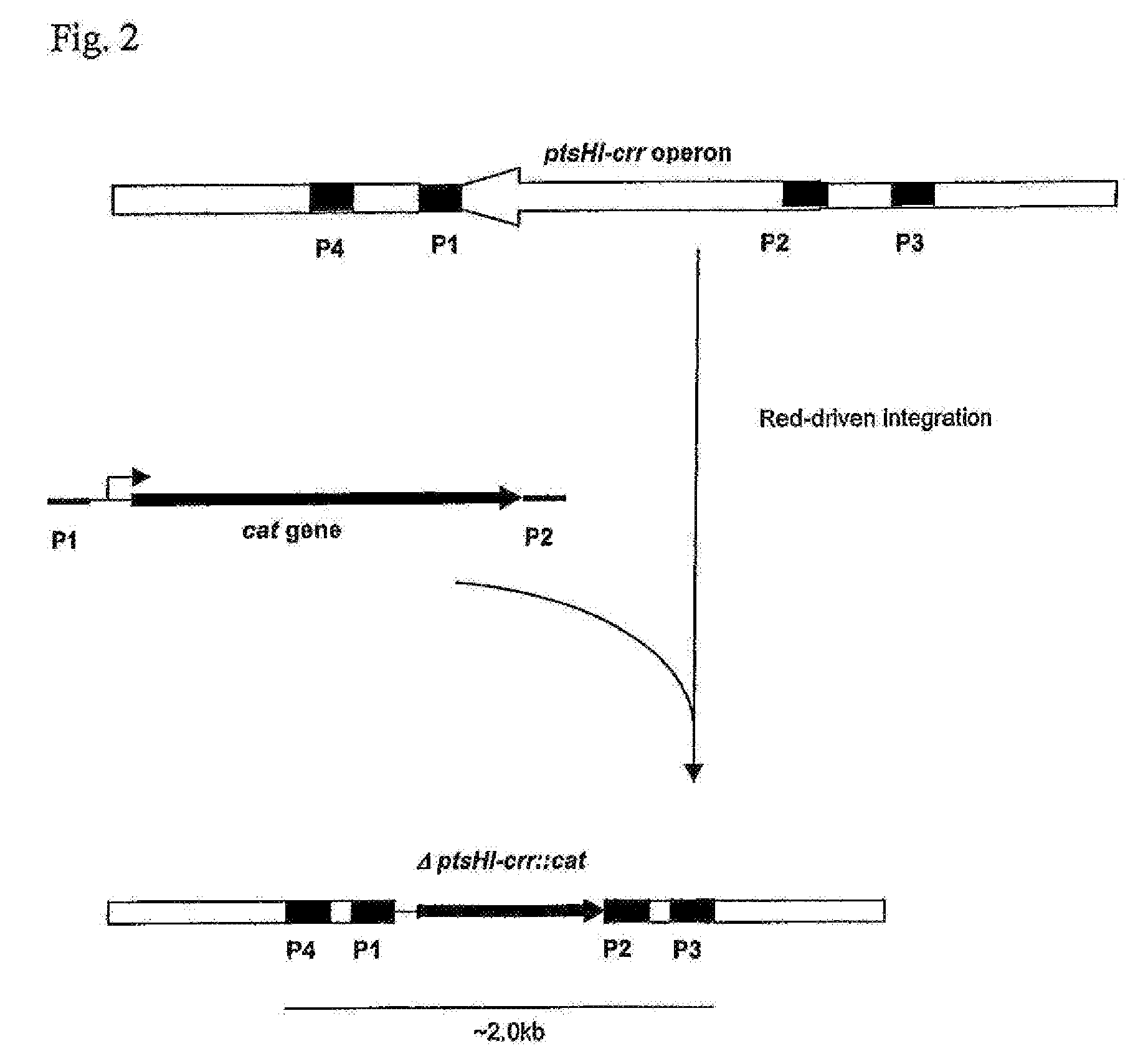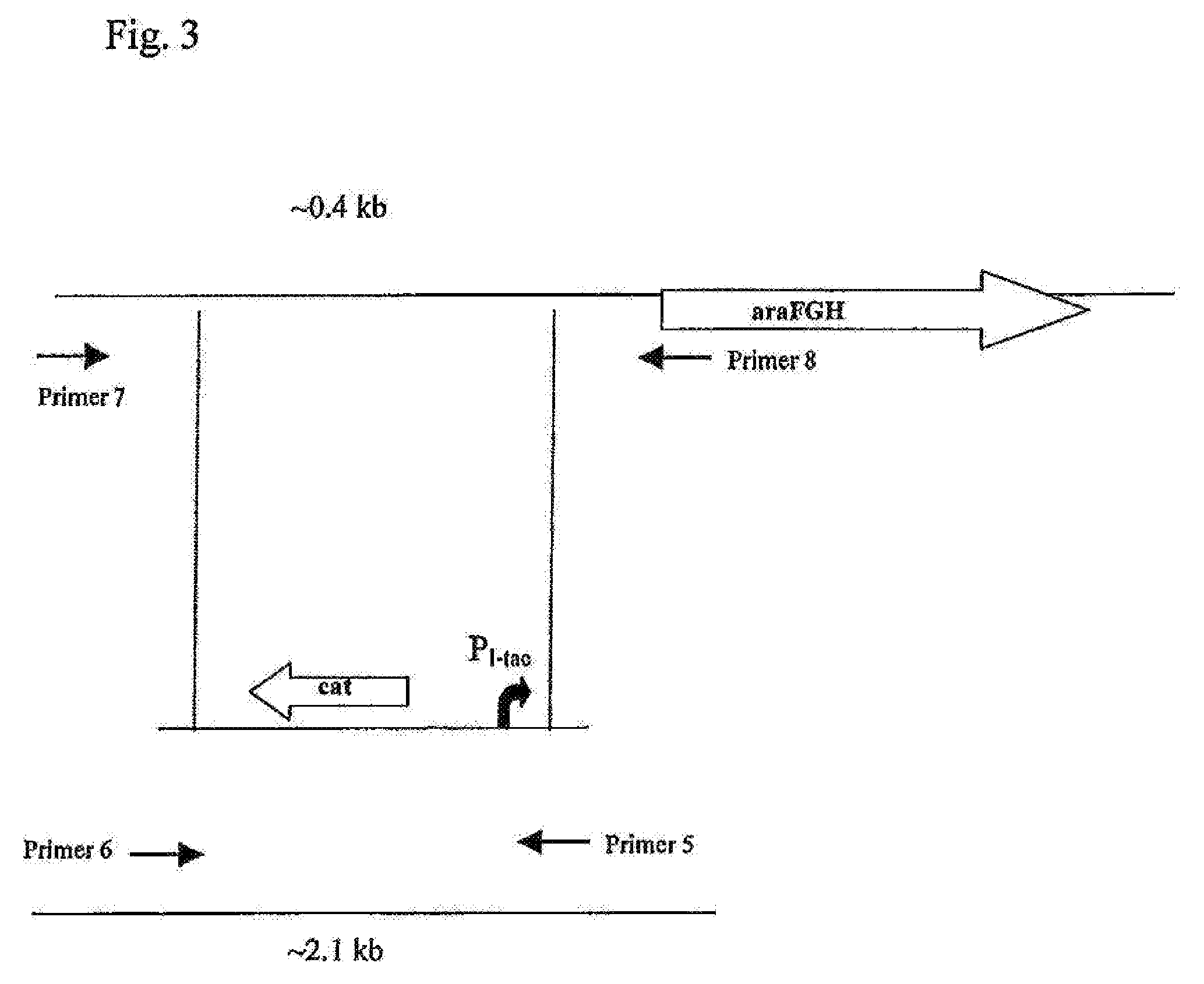Method for producing an l-amino acid using a bacterium of the enterobacteriaceae family
a technology of enterobacteriaceae and l-amino acid, which is applied in the field of lamino acid production, can solve the problems of insufficient carbon source access in highly productive strains, no reports to date of using a bacterium of the enterobacteriaceae family with enhanced expression, etc., and achieve the effect of enhancing the productivity of l-amino acid-producing strains
- Summary
- Abstract
- Description
- Claims
- Application Information
AI Technical Summary
Benefits of technology
Problems solved by technology
Method used
Image
Examples
example 1
Construction of the E. coli Strain Having a Disrupted PTS Transport System
[0167]1. Deletion of the ptsHI-crr Operon
[0168]The ptsHI-crr operon was deleted in a chosen strain by the method initially developed by Datsenko, K. A. and Wanner, B. L. (Proc. Natl. Acad. Sci. USA, 2000, 97(12): 6640-6645) called “Red-driven integration”. The DNA fragment containing the CmR marker encoded by the cat gene was obtained by PCR, using primers P1 (SEQ ID NO: 7) and P2 (SEQ ID NO: 8) and plasmid pMW118-attL-Cm-attR as a template (WO 05 / 010175). Primer P1 contains both a region complementary to the 36-nt region located at the 5′ end of the ptsHI-crr operon, and a region complementary to the 24-nt attL region. Primer P2 contains both a region complementary to the 36-nt region located at the 3′ end of the ptsHI-crr operon, and a region complementary to the 24-nt attR region. Conditions for PCR were as follows: denaturation for 3 min at 95° C.; profile for two first cycles: 1 min at 95° C., 30 sec at 5...
example 2
Replacement of the Native Promoter Region of the araFGH Operon in E. coli with the Hybrid PL-tac Promoter
[0176]To replace the native promoter region of the araFGH operon, a DNA fragment carrying a hybrid PL-tac promoter and the chloramphenicol resistance marker (CmR) encoded by the cat gene was integrated into the chromosome of the E. coli MG1655 AptsHI-crr in place of the native promoter region by the method described by Datsenko K. A. and Wanner B. L. (Proc. Natl. Acad. Sci. USA, 2000, 97, 6640-6645) which is also called “Red-mediated integration” and / or “Red-driven integration”, and is also described in Example 1.
[0177]The hybrid PL-tac promoter was obtained by PCR using the chromosomal DNA of E. coli strain B-3996PL-tacxylE (PCT application WO2006043730) as the template, and primers P5 (SEQ ID NO 11 and P6 (SEQ ID NO: 12). PCR was conducted as described in Example 1.
[0178]The amplified DNA fragment was purified by agarose gel-electrophoresis, extracted using “GenElute Spin Colum...
example 3
Effect of Enhancing the araFGH Operon Expression in the Strain Having a Disrupted PTS Transport System on L-Threonine Production
[0182]To disrupt the PTS transport system in the threonine-producing E. coli strain VKPM B-3996, the ptsH1-crr operon was inactivated. For that purpose DNA fragments from the chromosome of the above-described E. coli MG1655 ΔptsHI-crr::cat were transferred to the E. coli strain VKPM B-3996 by P1 transduction (Miller, J. H. Experiments in Molecular Genetics, Cold Spring Harbor Lab. Press, 1972, Plainview, N.Y.) to obtain the strain B-3996-Δ ptsHI-crr::cat.
[0183]The mutants without the ptsHI-crr operon and having the Cm resistance gene were verified by PCR. Locus-specific primers P3 (SEQ ID NO: 9) and P4 (SEQ ID NO: 10) were used in PCR for the verification. Conditions for PCR verification were as described above. The PCR product obtained in the reaction using the parental ptsHI-crr+ B-3996 strain as the template was ˜3.0 kbp in length. The PCR product obtain...
PUM
 Login to View More
Login to View More Abstract
Description
Claims
Application Information
 Login to View More
Login to View More - R&D
- Intellectual Property
- Life Sciences
- Materials
- Tech Scout
- Unparalleled Data Quality
- Higher Quality Content
- 60% Fewer Hallucinations
Browse by: Latest US Patents, China's latest patents, Technical Efficacy Thesaurus, Application Domain, Technology Topic, Popular Technical Reports.
© 2025 PatSnap. All rights reserved.Legal|Privacy policy|Modern Slavery Act Transparency Statement|Sitemap|About US| Contact US: help@patsnap.com



